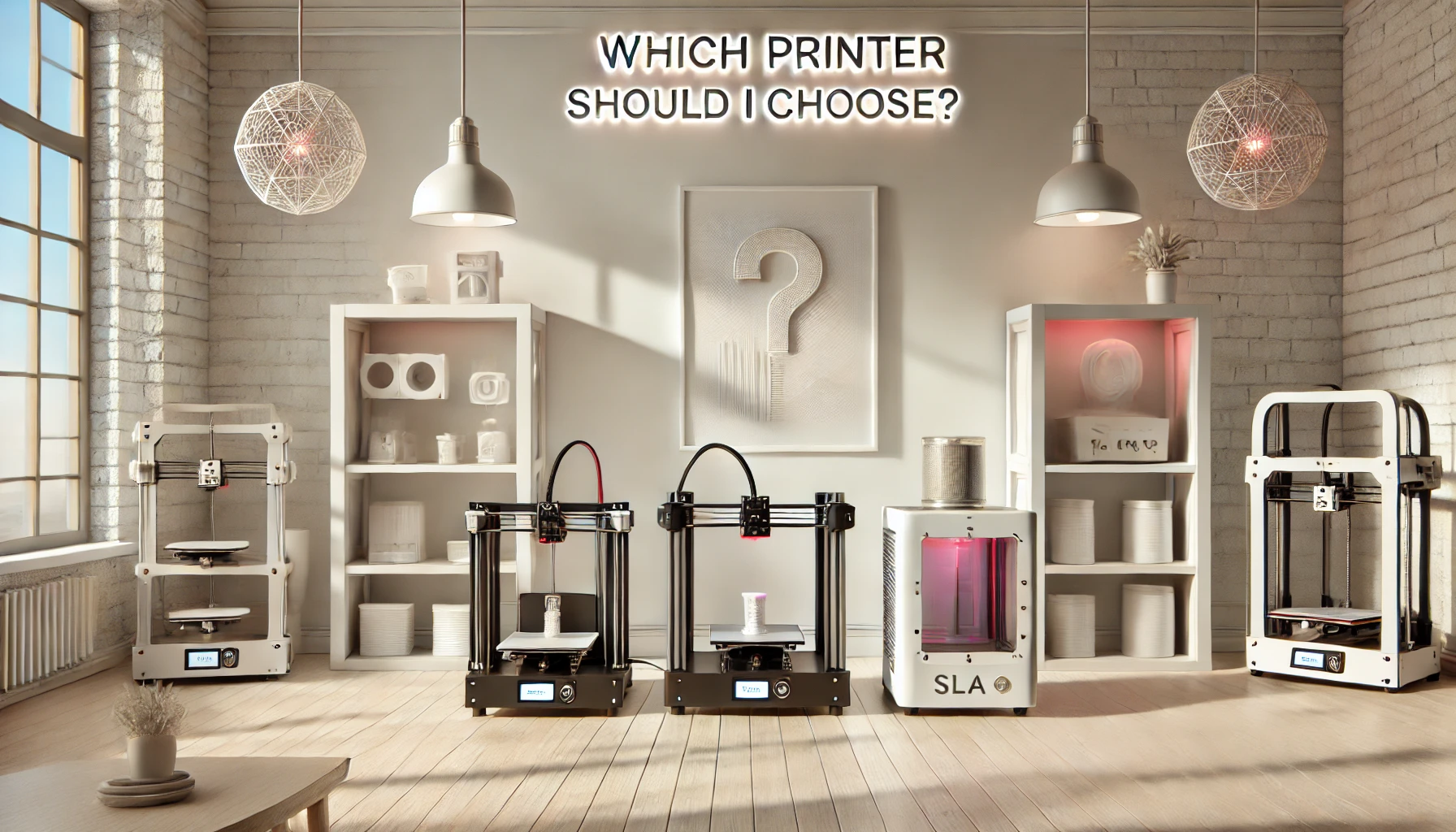
Choosing the right 3D printer involves understanding the various technologies available and how they align with your needs. Let’s dive into the key factors to consider when selecting a 3D printer in 2024, along with some examples of popular brands and models.
Printing Technology
There are several types of 3D printing technologies, each with its own strengths and applications:
- Fused Deposition Modeling (FDM): This is the most common type of 3D printing technology. It works by melting and extruding thermoplastic filament layer by layer to create an object. Examples include the Creality Ender 3 V3 SE and the Qidi Tech X-Plus II. Another excellent FDM printer is the Prusa i3 MK3S+, known for its reliability and high-quality prints.
- Stereolithography (SLA): SLA printers use a laser to cure liquid resin into solid plastic. This technology is known for producing high-resolution prints with fine details, making it ideal for applications requiring precision, such as jewelry and dental models. The Formlabs Form 3+ is a notable example. Another great SLA printer is the Anycubic Photon Mono X, which offers a large build volume and high resolution.
- Digital Light Processing (DLP): Similar to SLA, DLP uses a digital light projector to cure resin. It can produce high-quality prints quickly and is often used in industries like dentistry and jewelry. The Anycubic Photon M3 is a popular model. Another option is the Phrozen Sonic Mini 8K, which provides ultra-high resolution for detailed prints.
- Selective Laser Sintering (SLS): SLS printers use a laser to fuse powdered material, typically nylon, into solid objects. This technology is excellent for creating durable and functional parts, making it popular in industrial applications. The Formlabs Fuse 1 is a well-known SLS printer. Another example is the Sinterit Lisa Pro, which is praised for its precision and material versatility.
- Multi Jet Fusion (MJF): MJF is an advanced technology that uses a combination of inkjet printing and powder fusion. It offers high-speed printing and excellent mechanical properties, suitable for producing functional prototypes and end-use parts. The HP Jet Fusion 5200 is a leading model in this category. Another notable MJF printer is the Voxeljet VX1000, known for its large build volume and high throughput.
Build Volume
The build volume of a 3D printer determines the maximum size of the objects you can print. Consider the dimensions of the projects you plan to undertake. Larger build volumes are beneficial for printing big objects or multiple smaller items simultaneously. For example, the Anycubic Kobra Max offers a large build volume suitable for big projects. Another option is the Creality CR-10 V3, which provides a spacious build area for larger prints.
Print Speed
Print speed varies between different 3D printing technologies and models. Faster print speeds can save time, especially for large projects or batch production. However, higher speeds may sometimes compromise print quality, so finding a balance is crucial. The Creality K1 is known for its fast printing speeds. Another fast printer is the AnkerMake M5, which combines speed with high-quality output.
Print Quality
Print quality is influenced by factors such as layer height, resolution, and the precision of the printer’s components. Technologies like SLA and DLP typically offer higher resolution and finer details compared to FDM. Evaluate the level of detail required for your projects to choose the appropriate technology. The Qidi Tech X-Max 3 is known for its high print quality. Another high-quality printer is the Ultimaker S5, which delivers professional-grade prints with excellent detail.
Material Compatibility
Different 3D printers support various materials, including PLA, ABS, PETG, resin, nylon, and more. Consider the material properties you need, such as strength, flexibility, or heat resistance. Ensure the printer you choose is compatible with the materials you plan to use. The Qidi Tech X-Plus II supports a wide range of materials. Another versatile printer is the Raise3D Pro2, which can handle a variety of filaments and offers dual extrusion capabilities.
Ease of Use
User-friendly features like automatic bed leveling, touchscreen interfaces, and Wi-Fi connectivity can significantly enhance the 3D printing experience. For beginners, ease of setup and operation is crucial, while advanced users might prioritize customization and control. The Anycubic Kobra 2 is known for its user-friendly features. Another easy-to-use printer is the FlashForge Adventurer 4, which offers a streamlined setup and intuitive controls.
Cost
The cost of a 3D printer can vary widely based on the technology, features, and build quality. Consider not only the initial purchase price but also ongoing costs such as materials, maintenance, and potential upgrades. The Elegoo Neptune 4 Max offers a good balance of cost and features. Another budget-friendly option is the Monoprice Select Mini V2, which is affordable yet capable of producing quality prints.
Conclusion
Selecting the right 3D printer involves balancing your specific needs with the capabilities of different technologies. Whether you prioritize print quality, speed, material compatibility, or ease of use, understanding these factors will help you make an informed decision.
Happy printing!
https://www.creality3dofficial.com
Discover more from PrintCraft.gr
Subscribe to get the latest posts sent to your email.